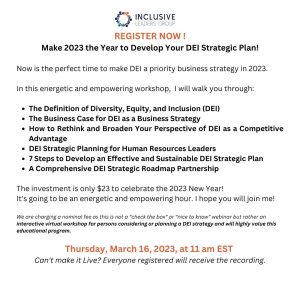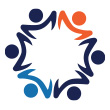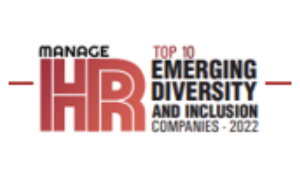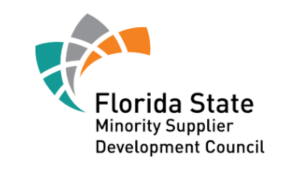When Inclusive Leaders Group advises clients on creating, inspiring, and enhancing the direction of their current and future DEI strategy and initiatives, helping them identify the business objectives to align that DEI strategy is an imperative.
Often, organizations hastily try to launch a DEI initiative, event, or training program without determining how the outcomes will directly increase, reduce, or sustain a key business measure. DEI is an economic driver , not a HR program, with tangible and intangible benefits. All problems or opportunities must be tied to business metrics that indicate growth and hold leaders accountable.
Goal Setting is Essential
Identifying how a diverse, equitable and inclusive workforce can aid in achieving business objectives aligned with the company’s strategy is an essential step in the process. The organization must set specific goals related to DEI based on the company’s strategic objectives.
For example, the U.S. Department of Veterans Affairs (VA) had a goal as part of their strategic plan to “Make VA a Place People Want to Serve.” As part of this goal, increasing diversity index scores is one of the agency’s performance indicators. Because its clients are becoming more diverse, the agency is responding by embracing a more diverse and inclusive workforce to better serve the population. Specific diversity goals were created to recruit more white and Hispanic males as well as Hispanic females after a comparison with the available labor market.
Innovation: a Popular DEI Business Objective
One of the most requested business objectives I come across through my strategy development consulting engagements is around creating more innovative products or services an employer can introduce quickly to surpass the competition. To do so, the employer wishes to increase innovation in the research and development (R&D) teams. One way to accomplish this goal could be to build cultural competence, inclusive decision-making, and inclusive leadership, within the team through training, which could more effectively harness existing team diversity, collaboration, and capitalize on diverse ideas.
Business Objectives Commonly Assigned To DEI Strategy
Considering all global industries the scope of an individual company’s business objectives is limitless. Inclusive Leaders Group’s approach focuses on “Value Drivers”, the metrics by which a company’s shareholders, analysts, and potential investors assess company performance – in absolute terms and relative to your competitors.
There are four general categories of Value Drivers: Revenue Growth, Operating Margin, Asset Efficiency, and Expectations.
- Under Revenue Growth and Operating Margin value drivers are business processes. Improving operational performance is a matter of making generate the business processes that generate revenues and make costs more effective and efficient. (Acquire New Customers, Retain and Grow Current Customers, Leverage Income-Generating Assets, Strengthen Pricing, Improved Customer Interaction Efficiency, Improve Corporate/Shared Services Efficiency.)
- Under Asset Efficiency are categories of assets used in operating the business. Increasing asset efficiency requires improving the productivity of both short-and long-term assets. (Improve Property, Plant, & Equipment (PP&E) Efficiency, Improve Inventory Efficiency, Improve Receivables & Payables Efficiency.)
- Under Expectations are drivers that represent capabilities of executives, leaders, and employees. Ensuring strong future business performance is a matter of strengthening capabilities that enable your company to consistently improve and adapt to changing environments. (Improve Management & Governance Efficiency, Improve Execution Capabilities.)

Human Capital/DEI Dimensions: Improvement Actions
DEI improvement actions you can take include businesses processes, programs, organizational capabilities, structure, and workforce dynamics that can improve a company’s ability to directly impact strategies to create shareholder value. Examples of Improvement actions include:
- Talent Strategies: Talent-focused activities to execute short-and long- term business objectives: workforce planning; critical workforce segments (CWS) identification and planning, sourcing, and recruitment; on-boarding, orientation, and assimilation; staffing; DEI competency model development; retention; talent mobility; flexible work arrangements, performance management, and career and succession planning. Example: Design and implement DEI talent strategies, programs, and processes that support marketing, sales, and product and service innovation objectives.
- Learning and Development: Activities in support of employee development including enterprise DEI learning strategy; inclusive leadership and management development, DEI learning instructional content and courseware design. Example: Design and implement DEI learning strategies to define, build, and reinforce core capabilities of customer-focused employees, including sales, customer-service, product development, and marketing staff.
- Change Management/Transformation: Activities focused on the people implications of major business events, including pre and post-mergers and acquisitions; corporate restructuring, sourcing, and outsourcing readiness; regulatory and compliance initiatives, adoption of new business processes and technologies, and introduction of new products and services. Example: Design and implement DEI-focused change management strategies to support marketing, sales, customer services, and product development staff.
- Organization Strategies: Activities in support of business initiatives that focus on developing organization and team structures, decision-making; culture, values, and behaviors; job design. Example: Improve efficiency and operational layers within organizational structures and processes with DEI to impact enterprise capabilities.
- Employee Rewards and Benefits: Activities that align employee and executive reward programs with the overall business objectives of the company in order to attract, motivate, motivate, and retain a workforce that will execute the business strategy (e.g. Compensation, benefits, and reward programs as well as the administration of those plans and programs, should be reviewed from the DEI perspective of their impact on the business plans and strategies.) Example: Optimize compensation and rewards strategy equity across the enterprise.
- Governance, Risk, and Compliance: Activities to proactively manage the people-related activities of risk, regulations, security, compliance, and ethics; inputs to board and senior executive selection and effectiveness. Example: Optimize corporate governance, risk management, and DEI strategy and initiatives across the enterprise to manage perceptions of internal and external stakeholders regarding corporate performance and future capabilities.
- HR Strategy and Services: Activities focused on the roadmap for HR strategy and the corresponding activities (HR service delivery and technology, administration of payroll, benefits, core HR processes and management of HR portals. Example: Design and implement an efficient and effective approach to delivering HR services to the organization in alignment with the developed HR strategy.
Actions You Can Take
To address the Human Capital/DEI Dimensions: Improvement Actions, there are two basic actions Inclusive Leaders Group can help you take:
- Change What You Do (Change your DEI strategy/Refocus your DEI resources)
- Do What You Do Better (Improve Your DEI execution)

Are you ready to explore executing a DEI strategic plan to meet your business goals?









